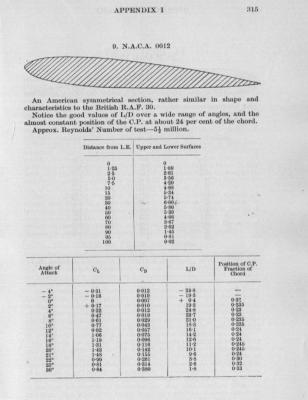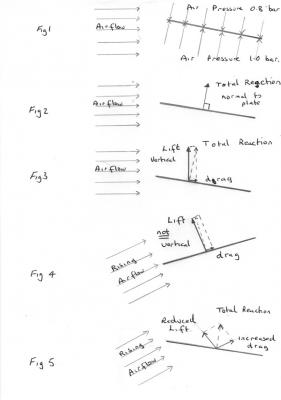-
Posts
17639 -
Joined
-
Last visited
-
Days Won
93
Content Type
Profiles
Forums
Events
Everything posted by studiot
-
All this latest discussion about angels and pinheads was why I wanted to compare the statistics of coin tossing with that of die rolling in an earlier thread. With coin tossing there is only one way (and therefore one probability) to report a given outcome. With die rolling you can report A number greater than 3 A five An odd number and so on. Each of these are respectable outcomes with their own particular probabilities. But some are also combinations of each other. The lesson about probability from this is that you can lump together a whole raft of minor outcomes in one single outcome labelled 'misfires', or whatever you chose to label it, in the case of the coin tossing machine. If you can show that this combined probability form all causes is less than some set value, you can ignore it. This is the basis of a modern engineering design method known as limit state analysis. As regards the probability of a baseball penetrating a brick wall you don't need to be able to calculate it exactly if you can show it is below some acceptable level. But remember that modern electronics depends upon there being an acceptably high probability of the equivalent happening to the charges in the circuit.
-
Thanks andy for finding a working video. +1 The video linked on the seller's site didn't work. The written text instructions are worse than a joke. 5 buttons - I count 7 Long screed about fitting a 9 volt battery As the video says, it uses two AA batteries. Hold enter down for off. No it has an off switch. "put most left transistor three slot" Your guess is as good as mine. *************************************************** Well the instrument has arrived and mostly works as described by the guy in the vid, but it didn't recognise a 741. Correctly identified a 2N5401 pnp transistor type and pinout. Correctly identified CMOS 4001 gate chip. Thanks everybody else for suggestions, keep them coming. It could be a very useful gadget with some reliable instructions.
-
-

Determination of the salinity of three estuarine water samples
studiot replied to FBarrett's topic in Homework Help
Further do you know why you are given three samples but only asked to calculate the concentration for 2 of them? R2 is a statistical measure of the 'quality' of the straight line on the graph. https://www.google.co.uk/search?q=R%5E2+in+regression+analysis&ie=utf-8&oe=utf-8&client=firefox-b-ab&gfe_rd=cr&ei=GBJkWaD9D8bU8gfcg5_oBw -
Yes there is a simple formula, but you can't just bung any old numbers into it, as this extract demonstrates. Some national aeronautical agencies publish tables of aerofoil characteristics to enter into the formula for lift and drag so if you know the wing shape and size you can look up the lift, for various flight conditions. for example
-
Thank you for the picture, Sensei, but please check your directions. It shows the important fact that The arrows point in the same direction all the way from the blue to the red. @Capiert, it is not an unreasonable guess that the two fields somehow cancel in the middle. Unfortunately, as swansont said, it is a guess and not correct Physics. The key to this is in the fact that the lines of force point inwards at negative charge and outwards at positive https://www.google.co.uk/search?q=lines+of+force+at+positve+and+negative+charge&ie=utf-8&oe=utf-8&client=firefox-b&gfe_rd=cr&ei=NH1iWZbuFKqn8wexs6S4AQ So the lines of force between the plates are continuous frok one plate to the other. They do not change over half way.
-
Unfortunately it's not as simple as that. Equally too many make it too complicated by long unproductive arguments about the origin of the lift. So here is an uncomplicated development, accessible to any upper high school pupilof physics / applied maths. First let me say that Lift is a vector and it often does not point directly upwards in real flight. Aircraft climb and descend, bank and turn, and fly at various airspeeds. Initially considering real aircraft shapes and airfoils tends to hide the mechanics of what is going on so I will start with a flat plate. The plate is inclined to the airstream and we shall see why this is and the effect of that inclination with the help of the figures below. We shall also see why aircraft like to maintain straight level (horizontal) flight as much as possible. So to Figure1. It doesn't matter whether the air moves over the plate as shown or the plate moves throughstill air, the effect is the same. In this situation, It is an observed fact that the average pressure pushing down on top of the plate is lower that the average pressure pushing up on the underside. Typical values are shown for subsonic aircraft. The air pressure above is reduced to about 80% of that below. This difference leads to a normal reaction (at right angles to the plate) as shown in Figure 2. Since the plate is inclined to the horizontal airflow this reaction is not vertical.. The total reaction may be resolved into two mutually perpendicular components, called the Lift and the Drag, as shown in Figure 3. Now we see the effect of tilting the plate. The Lift is vertical. Furthermore we want to maximise the Lift and minimise the Drag. This happens at low angles of inclination, as shown. So that is straight, level (horizontal) flight. In Figure 4 we turn the vector diagram in Figure 3 round so the air is now rising or the plate descending. If we maintain the plate to airstream inclination angle, the vectors will be the same but rotated by the angle of descent. So the Lift is no longer vertical. But obviously only the vertical component of the Lift force supports the plate. As we increase the angle of inclination to the airstream, the vectors change, with the Lift reducing and the Drag force increasing as shown in figure 5. Further the angle of Lift becomes less favourable, but the Drag can be seen to be providing a significant upward contribution. So the developed Lift depends upon how the aircraft is flying. Furthermore we have only so far discussed straight flight, so the diagrams have been two dimensional. As soon as we take turning manouveres into account we must resolve the total reaction in three dimensions, not two. If this is of interest let us know your proposed application for more detail.
-
This thread had become so vituperous that I had withdrawn. However I have noticed something in the above. Eldad Eschel, You don't seem to know what Fermat's Last Theorem actually says. This is perfectly consistent with the first part of what you say, but perhaps your difficulty is contained in your last two lines where you seem to think that Fermat or someone offered three such numbers for some n>2 He did not. Have you perhaps misread the theorem?
-
Fermat's Last Theorem?
-
Does it also happen on 'busy' sites such a Ebay, the websites of newspapers CNN etc? I think it is much more likely to be the interaction between your browser and such sites where there are umpteen people tracking you these days to try to advertise to you. Have you got anything to do with 'babylon' or 'protection' in your program list. These are spyware things that are not prevented by antivirus.
-

Imagination is more important than knowledge
studiot replied to Itoero's topic in General Philosophy
No I didn't say knowledge implies understanding, I said they were different. I also said that sometimes there was overlap. I would also agree with those who suggested that you need (perhaps a great deal of) knowledge to achieve understanding. The difficulty with that overlap is that there is no one without at least some knowledge. Driving only reqires knowledge, it does not require understanding, though some have a measure of both. Do you understand why you drive on the right? All that is required is the knowledge that it is so. Do you understand why the speed sign has the design it does? All that is required is the knowledge of its appearance. Do you understand what the green and red zones are on the tachometer or do you just have the knowledge that you must keep it in the green? Most people have some understanding, but considerably more knowledge about cars and driving. There is also another quality involved. - skill. Again some have more than others, despite both substantial knowledge and understanding. -
Well I have been thinking about a suitable description for you. This would entail quite a bit of work for me. BUT With that response to my last post I don't believe you would actually read it, any more than you appear to have read Eise's good efforts on your behalf. I see he hasn't bothered again. If I posted some mathematics would you be able to understand it? In theory you are the one challenging established mathematical physics so you should be the one posting supporting mathematics. We can only help you if we all work together.
-

Imagination is more important than knowledge
studiot replied to Itoero's topic in General Philosophy
No I don't agree with you there. But then I only partly agree with the other contributors to this discussion. Knowledge, understanding, skill, reaoning, imagination, visualisation (and other cerebral activities) are all different. That is why we have so many different terms or words in English. That is not to say that there is no overlap. Yes there is overlap but there is also disjunction between the terms. That is why activities often entail combinations of those qualities. Like a Venn diagram with union or intersection. Just to note about knowledge without understanding two examples: Many drive a car without the faintest understanding of how it works. Most elementary calculus courses develop a good deal of manipulative skill and knowledge, but I don't think many of the pupils have much understanding of calculus. -
Only one of your posts is more than one line long. Why would anyone put more effort into answering than this? Are you having trouble with the English language? What level should we be pitching answers at mathematical or just explanatory?
-
No I told you that in post#7. Try asking questions directly related to what others have told you and you will get much more out of the conversation.
-
I'm sorry to tell you that you are being tracked all the time, and it has nothing to do with your IP address. Perversely, the older your computer the harder it is for the modern tracking to work, Windows 10 is by far the worst of all. Accessing your files is a different matter, you have more conrol here.
-
A good length description setting out your stall. Well done, most seem to make their OP too long or too short. However I fear you have misunderstood frames of reference. Why do you say that the apple and the satellite are in different frames of reference? You haven't explicityl mentioned the centre of the Earth, but by your reasoning this should be in yet another frame. Further you state that the 'distance between them is not changing. How are you reckoning this distance? In which frame of reference? Please explain.
-
Surely this belongs in the crackpot section, not alongside 'other sciences' like hairdressing or dog grooming.
-
Thank you , that is younger than I guessed. But I am more interested in what science you know and what you thought about my explanation. So that I can connect it to what you already know.
-
Hello Sigmarus, I see your main interest is Chemistry and that you are in 'lower-secondary' so I will try to pace the answers accordingly. To offer best help I will split my answer into two parts (posts) and also ask a couple of questions about your actual study level. I am guessing that you have completed one year of what we call the sixth form in the UK which means you will have studied 'force statics' and understand what equilibrium means but not yet studied dynamics or kinematics. As a chemist you will also have heard of the law of conservation of energy. Please confirm or correct these guesses. So first to answer your question as to why friction opposes motion. This is entirely due to the law of conservation of energy. Imagine a rough block sitting quietly on a rough surface ( We say a rough surface when friction is involved and a smooth surface etc when friction is not involved) Now let us start to pull it along and then let go of the pull. If the friction acted in the direction of motion and we removed the pull, the block would continue to move under the action of the friction alone. We know that does not happen and I hope you can see that if it did it would contravene the law of conservation of energy. What we observe is that the block slows to a standstill as the kinetic energy is dissipated as work against the frictional force. If you like this we can study your other question (about the spring balance) in more detail. These are good questions, by the way, so keep asking them. +1
-
First class summary list, StringJunky, inlcuding some things I had not heard of. Thank you +1
-
Yes and no. Schrodingers wave equation is a differential equation of motion and applied pretty generally. As such it has many solutions, most of which are useless to us. We need to select the apppropriate one by applying the appropriate boundary conditions. This is where the pictures Eise showed you come in.. They are for what is called a 'particle in a box' or a potential well which means that a negatively charged particle (electron) is subject to a potential well near the positively charged nucleus due to electrostatic interaction. The solution must have 'nodes' at the box edges (points of zero amplitude) like a standing wave on a string in classical mechanics. It is this requirement that introduces the quantisation into the mathematics of the origianl equation.
-
Yes, this is good thinking. Frquency modulation is the most common form of phase modulation, but not the only one. If, however, you want to pack more data in you need to employ a variety of methods, in multiplexed mode. This is how television tranmission used to work, before digital. Current so called broadband internet signals also use multiplexing, in this case time domain multiplexing.
-
Study this, it is applicable to fractals. https://en.wikipedia.org/wiki/Hausdorff_measure https://www.google.co.uk/?gws_rd=ssl#q=hausdorff+measure





